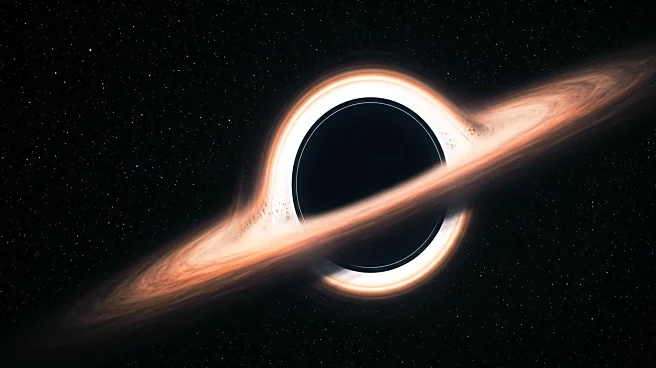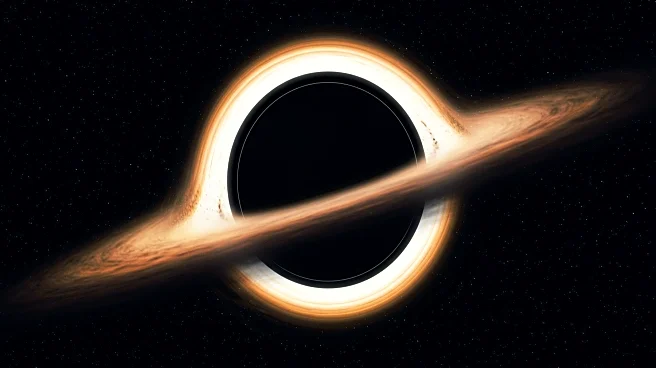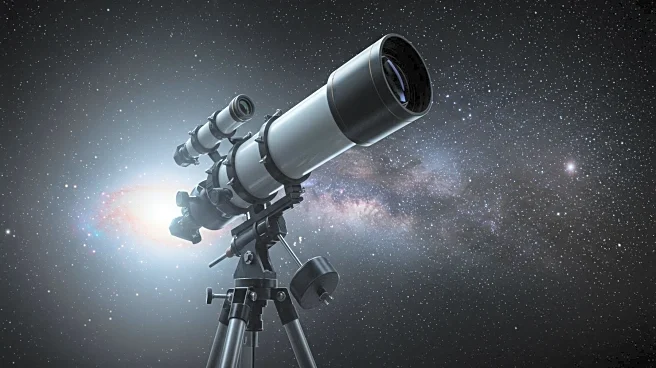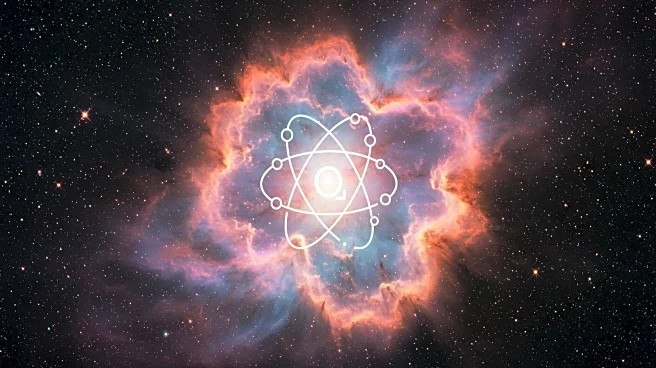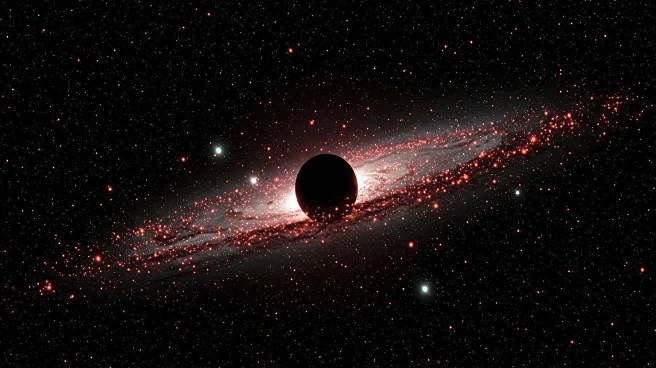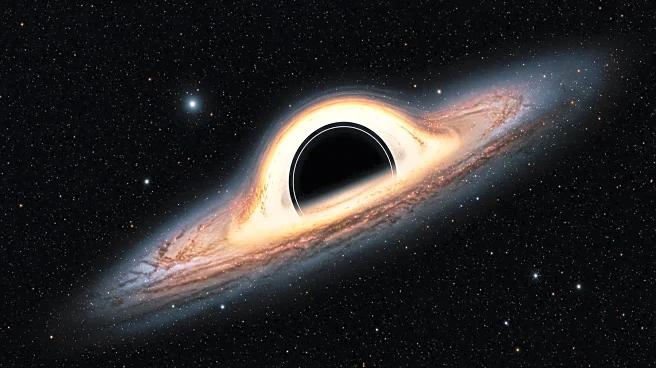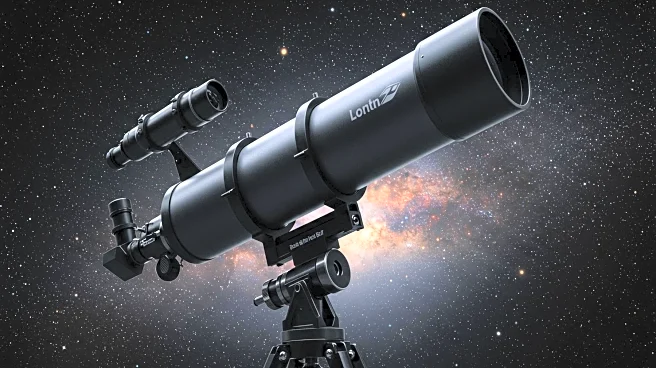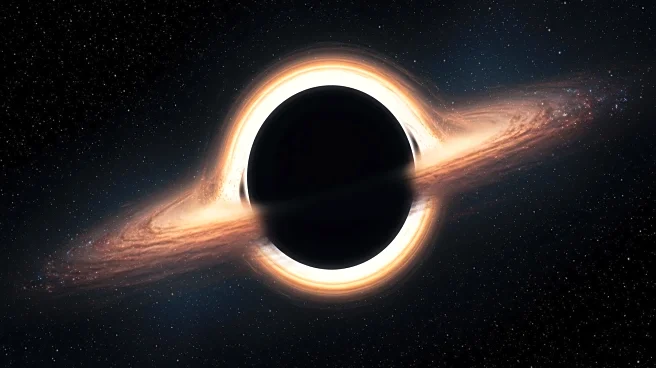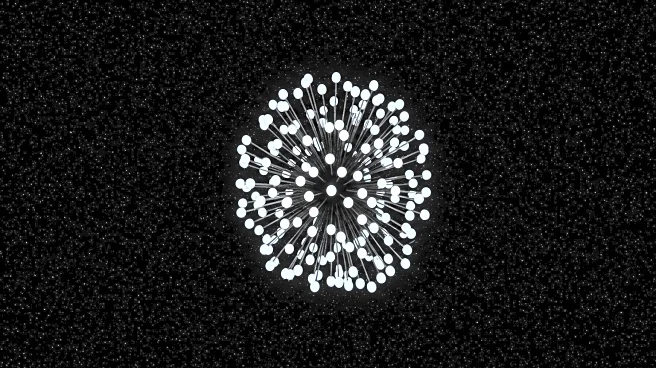What is the story about?
What's Happening?
Astronomers have confirmed the existence of the earliest and most distant black hole, located in the galaxy CAPERS-LRD-z9. This supermassive black hole, known as an active galactic nucleus (AGN), is approximately 300 million times the mass of the Sun and formed just 500 million years after the Big Bang. The discovery provides insights into Little Red Dots (LRDs), bright red objects in the early universe, which are believed to contain supermassive black holes. The black hole's gravity accelerates surrounding gas to high speeds, allowing astronomers to detect its presence through spectroscopy. This finding supports the theory that LRDs were a transient phenomenon in the early universe, potentially playing a role in galactic evolution.
Why It's Important?
The confirmation of this ancient black hole is significant for understanding the formation and evolution of galaxies in the early universe. It challenges existing theories about how black holes grow and interact with their host galaxies. The discovery of LRDs containing supermassive black holes suggests that these objects may have been crucial in the development of galaxies like the Milky Way. Additionally, the study of these early cosmic structures can provide valuable information about the conditions of the universe shortly after the Big Bang, offering insights into the processes that shaped the cosmos.
What's Next?
Further research is needed to explore the implications of this discovery on our understanding of cosmic evolution. Astronomers will continue to study the properties of LRDs and their role in galaxy formation. The findings may lead to new models of black hole growth and the dynamics of early galaxies. As technology advances, researchers hope to uncover more details about these ancient structures and their impact on the universe's development.
Beyond the Headlines
The discovery raises questions about the nature of black holes and their influence on the universe's evolution. It highlights the importance of advanced telescopes like the JWST in revealing hidden aspects of cosmic history. The study of LRDs and their supermassive black holes may also contribute to understanding the origins of the Milky Way and other galaxies.
AI Generated Content
Do you find this article useful?
